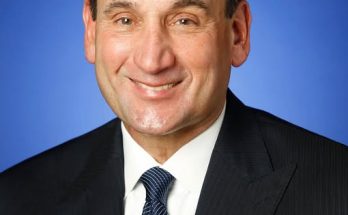The most significant new development for the Minnesota Vikings heading into the 2025 NFL season is unequivocally their massive, calculated investment of over $200 million into upgrading their offensive and defensive lines, designed to provide a foundational infrastructure for their new franchise quarterback, J.J. McCarthy. While the transition at quarterback from veteran Sam Darnold to the young, highly anticipated J.J. McCarthy is certainly monumental in itself, the strategic decision to aggressively reinforce the trenches demonstrates a clear, forward-thinking organizational philosophy that aims to support McCarthy’s development and establish a dominant, physical identity for the team.
This multi-faceted investment signifies a dramatic shift in the Vikings’ approach, moving away from past iterations that sometimes prioritized skill positions over the critical battlegrounds at the line of scrimmage. After a 2024 season that saw the Vikings achieve a surprising 14-3 record under Sam Darnold but falter in the postseason, General Manager Kwesi Adofo-Mensah and Head Coach Kevin O’Connell identified the trenches as the area needing the most significant overhaul to truly contend for a Super Bowl. Their actions in the 2025 offseason reflect this conviction, with a spending spree that has garnered widespread praise from NFL analysts.
On the offensive line, the Vikings have made key additions, most notably signing center Ryan Kelly (2 years, $18 million) and guard Will Fries (5 years, $87.7 million). The addition of first-round rookie guard Donovan Jackson also adds significant draft capital and potential. This aggressive pursuit of interior offensive linemen aims to solidify pass protection and, critically, improve the team’s rushing attack. Ryan Kelly, a seasoned Pro Bowl center with a nine-year track record of strong pass protection, is expected to be a significant upgrade. The fact that Kelly and Fries have built-in chemistry from their time as Colts teammates is an added bonus, potentially accelerating their integration into the Vikings’ scheme. This emphasis on the offensive line directly benefits McCarthy, providing him with a cleaner pocket and more time to operate, which is crucial for a young quarterback’s development. A robust running game, bolstered by these line improvements and the re-signing of Aaron Jones, will also alleviate pressure on McCarthy, allowing the offense to operate with balance and efficiency.
Equally impactful is the investment on the defensive line, where the Vikings have brought in high-impact veteran defensive tackles Jonathan Allen (3 years, $51 million) and Javon Hargrave (2 years, $30 million). These additions signify a clear intent to create more interior pressure on opposing quarterbacks and improve run defense. Allen, a multiple-time Pro Bowler, and Hargrave, also a Pro Bowl talent, bring a veteran presence and a proven ability to disrupt opposing offenses from the inside. This “double-dipping” at the 3-technique position opposite Harrison Phillips is a shrewd move by defensive coordinator Brian Flores, who thrives on generating pressure and creating chaos for opposing offenses. While the price tags for Allen and Hargrave were substantial, the Vikings, with McCarthy on a rookie contract, had the necessary cap space to make these significant splashes.
The synergy between these offensive and defensive line investments is what makes them the most significant development. The Vikings are building a team that is strong where games are truly won: in the trenches. This strategy is designed to create a more resilient, physical team that can win in various ways, crucial for navigating the demanding NFC North and competing deep into the playoffs. A dominant offensive line protects their young quarterback and fuels their running game, while a suffocating defensive line generates pressure and stops the run, allowing their talented secondary (featuring re-signed Byron Murphy Jr. and veteran Harrison Smith) to make plays.
This comprehensive investment in the lines is directly tied to the overarching plan for J.J. McCarthy. After a 2024 season where Sam Darnold led the team to 14 wins, the Vikings are now fully entrusting their future to McCarthy, who was drafted 10th overall in 2024. McCarthy missed his entire rookie season due to a knee injury, making his 2025 debut as the undisputed starter a highly anticipated event. The organizational belief is that by surrounding him with elite protection and a strong running game, as well as a stout defense that can keep opposing offenses in check, McCarthy will have the optimal environment to succeed and grow into the franchise quarterback the Vikings envision. This “quarterback incubator” approach, as GM Kwesi Adofo-Mensah described it, highlights a deliberate effort to mitigate the typical growing pains of a rookie signal-caller by building a formidable supporting cast around him.
While McCarthy’s development and on-field performance in 2025 will be under intense scrutiny, the decisions made to strengthen the offensive and defensive lines demonstrate a clear commitment from the Vikings’ front office and coaching staff to provide him with every possible advantage. This isn’t just about adding talent; it’s about building a sustainable, physical identity that can carry the team through the rigors of an NFL season. The $200 million investment into the trenches is a tangible manifestation of this strategy, setting the stage for what the Vikings hope will be a new era of consistent contention in the NFC. It is the most significant development because it represents a foundational shift that impacts every facet of the team’s performance, directly supporting their future at the most critical position.


